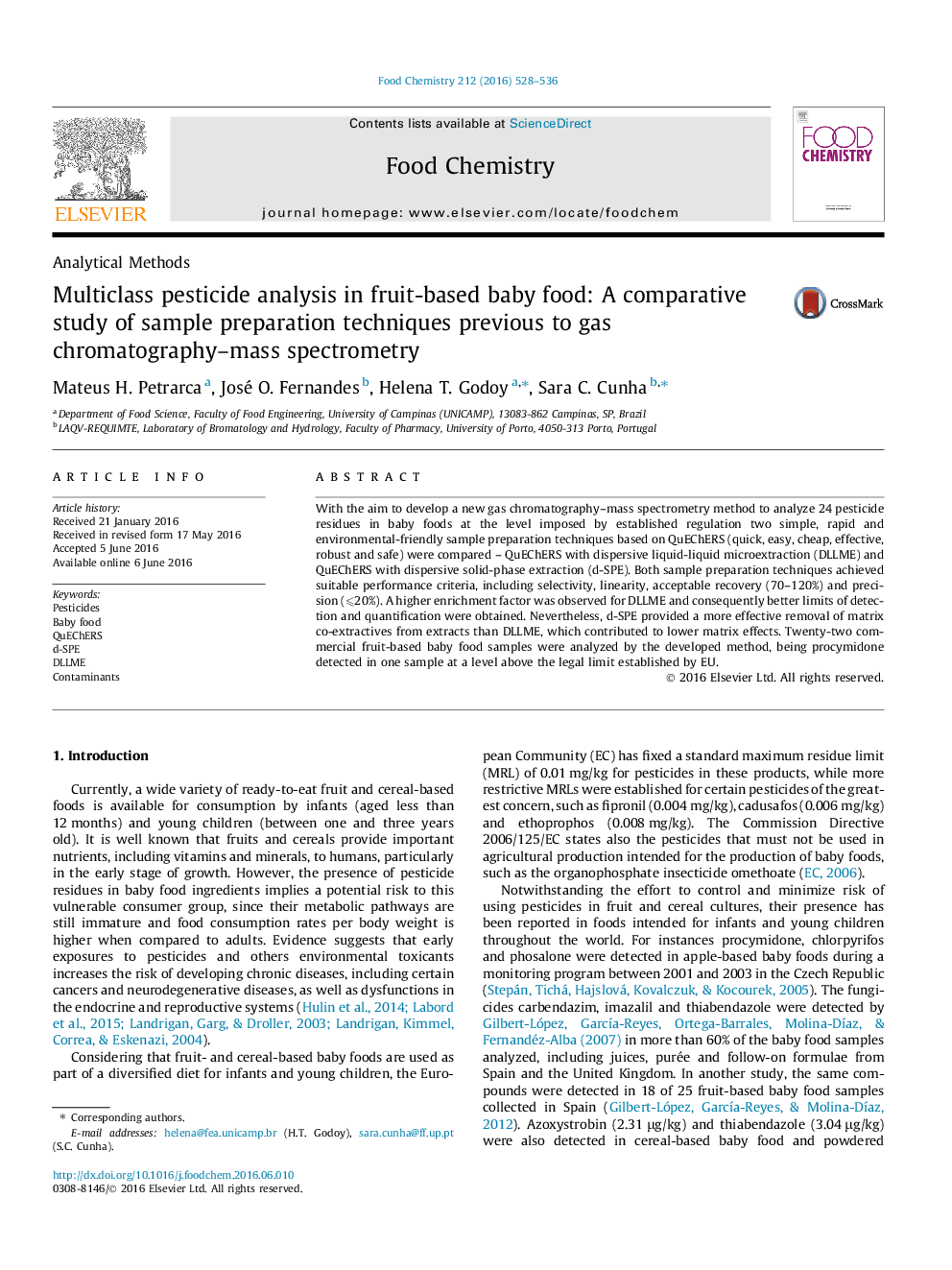| Article ID | Journal | Published Year | Pages | File Type |
|---|---|---|---|---|
| 1185111 | Food Chemistry | 2016 | 9 Pages |
•QuEChERS-DLLME and QuEChERS-dSPE were compared regarding the performance criteria.•QuEChERS and DLLME techniques were combined for pesticide analysis in baby food.•The presented method provided LODs enough to meet the baby food safety requirements.•Procymidone was detected in one of 22 fruit baby food sample analyzed.
With the aim to develop a new gas chromatography–mass spectrometry method to analyze 24 pesticide residues in baby foods at the level imposed by established regulation two simple, rapid and environmental-friendly sample preparation techniques based on QuEChERS (quick, easy, cheap, effective, robust and safe) were compared – QuEChERS with dispersive liquid-liquid microextraction (DLLME) and QuEChERS with dispersive solid-phase extraction (d-SPE). Both sample preparation techniques achieved suitable performance criteria, including selectivity, linearity, acceptable recovery (70–120%) and precision (⩽20%). A higher enrichment factor was observed for DLLME and consequently better limits of detection and quantification were obtained. Nevertheless, d-SPE provided a more effective removal of matrix co-extractives from extracts than DLLME, which contributed to lower matrix effects. Twenty-two commercial fruit-based baby food samples were analyzed by the developed method, being procymidone detected in one sample at a level above the legal limit established by EU.
